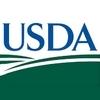Explore all the information on
Swine nutrition
Pigs require a number of essential nutrients to meet their needs for maintenance, growth, reproduction, lactation, and other functions. However, factors such as genetic variation, environment, availability of nutrients in feedstuffs, disease levels, and other stressors may increase the needed level of some nutrients for optimal performance and reproduction.
Swine require six general classes of nutrients: water, carbohydrates, fats, protein (amino acids), minerals, and vitamins. Energy, although not a specific nutrient, is an important nutritional component and is primarily derived from the oxidation of carbohydrates and fats. In addition, amino acids (from protein) that exceed the animal’s requirements for maintenance and tissue protein synthesis provide energy when their carbon skeletons are oxidized. Antibiotics, chemotherapeutic agents, microbial supplements (prebiotics and probiotics), enzymes, and other feed additives are often added to swine diets to increase the rate and efficiency of gain, to improve digestibility, and for other purposes, but they are not considered nutrients.
Pigs require a more concentrated diet and should be fed a less-fibrous feed than cattle, sheep, or horses. As they grow, their nutritional requirements change and the diet should meet their needs in various phases of growth and stages of production.
Dr. John Htoo, Director of Global Technical Support for Swine at Evonik Animal Nutrition, offers details about the range of solutions that Evonik brings to the animal nutrition industry....
Comments : 0
Recommendations: 4
Dr. John Htoo, Director of Global Technical Support for Swine at Evonik Animal Nutrition, explains how Evonik Animal Nutrition has been committed to bringing innovative and sustainable concepts for healthy animal protein-based food for more than of three decades
...
Comments : 0
Recommendations: 4
.jpg&w=3840&q=75)

Achieving Successful Protein Reduction: Possibility or Wishful Thinking?
Suggested link
Jerry Shurson (University of Minnesota) spoke about DDGS as a feed ingredient and its advantages, during CLANA 2018 in Sao Paulo, Brazil....
Comments : 1
Recommendations: 0
Invited by Phileo Lesaffre Animal Care, Dr. Knud Erik Bach Knudsen from the Department of Animal Science at the Aarhus University (Denmark), highlights the main aspects of his presentation (carbohydrates and bioactive phytochemicals) in animal nutrition, during CLANA 2018, in Brazil.
...
Comments : 0
Recommendations: 4
Introduction The β-agonist ractopamine (RAC) is a dietary ingredient used in diets for finishing pigs to redirect nutrients to protein accretion that would otherwise go to the synthesis and deposition of lipids, resulting in improved performance and carcass traits (DUNSHEA et al., 1993; SCHINCKEL et al., 2003). It is well established that Lys requirements for optimal performance and carcass traits are greater for pigs fed RAC (NRC, 2012; ANDRETTA et al., 2012). In addition,...
Comments : 0
Recommendations: 0
Note: Creamino® is no longer distributed through Evonik. Since July 2020, Evonik is selling its own product GuanAMINO® to the market. Please contact us directly or get in touch with your local Evonik representative for more information or purchase Conclusion Results of this study showed that the supplementation of CreAMINO® at 0.12% significantly improved the growth performance of pigs from starter to finisher stage. Lean...
Comments : 2
Recommendations: 5
Diego Rodríguez (University of Illinois) also discussed growth performance and carcass characteristics after feeding pelleted or meal DDGS diets, during the 22nd Annual Distillers Grains Symposium in Des Moines, Iowa....
Comments : 1
Recommendations: 0
Note: Creamino® is no longer distributed through Evonik. Since July 2020, Evonik is selling its own product GuanAMINO® to the market. Please contact us directly or get in touch with your local Evonik representative for more information or purchase CONCLUSIONS Supplementation of 0.12 % CreAMINO ® in finisher pigs diet 60 days before slaughter improved weight gain, FCR, lean meat yield by 4.30 %, 4.19 % and 2.20 %, respectively,...
Comments : 0
Recommendations: 3


Veterinary APIs Market Update: Price Trends & Key Insights – February 2025
Suggested link
INTRODUCTION Stable carbon and nitrogen isotope ratios of animal tissues represent a balance between dietary intake and loss. In general, when animals are close to a steady state nitrogen balance and their food source has a constant nitrogen ( δ15 N) isotope ratio, their δ15 N values in a specific tissue do not exhibit significant fluctuations. This assumption is the basis for using animal tissue isotopic compositions (more often nitrogen and...
Comments : 0
Recommendations: 0
Antonio Martinez, Director of Liptosa, talks about the third generation of product line for swine.
*Certain information associated with products, their composition and claims may be different depending on the geographical region and may not be applicable in all countries. Liptosa reserves the right to adapt to the requirements and legislation in each case.
The information and technical recommendations provided herein are based on Liptosa's current knowledge and experience.
Liptosa reserves...
Comments : 1
Recommendations: 1
.jpg&w=3840&q=75)

Achieving Successful Protein Reduction: Possibility or Wishful Thinking?
Suggested link
Introduction Feeding is the most costly item on pig farms, representing 65% of total costs of the farming activity. In this respect, the possibility of earning profits from swine culture depends on proper feed planning, which involves availability of ingredients in adequate quantity and quality at prices that allow production. Given this scenario, there is a growing demand for alternative feeds in animal nutrition using by-products and industrial waste, especially because of the...
Comments : 0
Recommendations: 0
Introduction The biodiesel industry from fatty sources generates glycerin, a by-product that can be used as an excellent source of energy for growing pigs. In Colombia, the installed capacity of biodiesel production was of 505.708 t in 2013 (1). Each liter of biodiesel generates approximately 79 g of crude glycerin (2), consequently, with the installed capacity, the country will produce annually around of 51940 t of crude glycerin (80% glycerol) with a density of 1.3 g/m...
Comments : 0
Recommendations: 0
INTRODUCTION In ancient times, mankind survived with food from daily hunting. As human being accumulates experiences and knowledge about nature, agriculture became a major way of obtaining food. Agricultural activity also allowed us to have stable food supply and this was one of important reasons for the increase in human population and cultural flourish. As entering modern society, growth of human population accelerated as so demands for food....
Comments : 0
Recommendations: 0
Dr. Brian Kerr (USDA) commented on his latest research projects in swine and poultry nutrition, during the 22nd Annual Distillers Grains Symposium in Des Moines, Iowa....
Comments : 0
Recommendations: 2
In performance-oriented pig feeding, nutrient-rich and highly digestible diets are standard. In this context, the topic of "fibre" in pigs has long been associated with dilution of energy, reducing digestibility, feed conversion and performance. Currently, however, the perspective has changed and the importance of fibre for digestion, health and animal welfare is increasingly in focus. This view has its origin in human nutrition indicating that dietary fibre can have a large influence...
Comments : 4
Recommendations: 0
1. Introduction Arabinoxylan and β-glucan naturally occur in the endosperm and aleurone cell walls of cereal grains with varying degrees of solubility. The content of rye and wheat arabinoxylan varies in the range of 6%–12% in the whole grain, and 21%–25% in the bran [1–3]. The proportion of β-glucan in whole grain oat is approximately 3% and 8% in the oat bran [4], whereas in the content of whole grain rye is reported to be ~1.0%–2.5% with...
Comments : 0
Recommendations: 0


Veterinary APIs Market Update: Price Trends & Key Insights – February 2025
Suggested link
Background Xylose, as a major constituent of plant xylan polymers, is one of the most abundant carbohydrates on the earth, second only to glucose [1, 2]. This abundant pentose sugar, along with arabinose, makes up a majority of the hemicellulose backbone as arabinoxylan in the cell walls of cereal grains fed to pigs [3]. Cereal arabinoxylans (also known as pentosans) are composed of a linear β-1,4- linked xylose backbone which may be substituted at the 2’-OH...
Comments : 2
Recommendations: 1
Background The pig, Sus scrofa, appeared in South East Asia ~4.2 million years ago (M) [1], colonizing a wide range of habitats thereafter including Europe and North Africa. European and Asian wild boars are estimated to have diverged ~1.2 M [2]. The wild boar is among the first of the domesticated livestock species, an event that occurred approximately 8,000-10,000 BC both in Europe and in Asia in independent events [3,4]. Today, thanks to the intense modern breeding and...
Comments : 0
Recommendations: 1
.jpg&w=3840&q=75)

Achieving Successful Protein Reduction: Possibility or Wishful Thinking?
Suggested link
Abstract Probiotics are considered to have the beneficial effect on maintaining intestinal ecosystem, enhancement mucosal barrier functions, and improving livestock performance. Muco-defen (Life Rainbow Biotech Co., Ltd. Taiwan) is the product composed of selected Bacillus strains via patent solid-state fermentation process to ensure the 2nd metabolites production, and formulated with essential oil, that can prevent colonization of pathogens by...
Comments : 0
Recommendations: 1
































